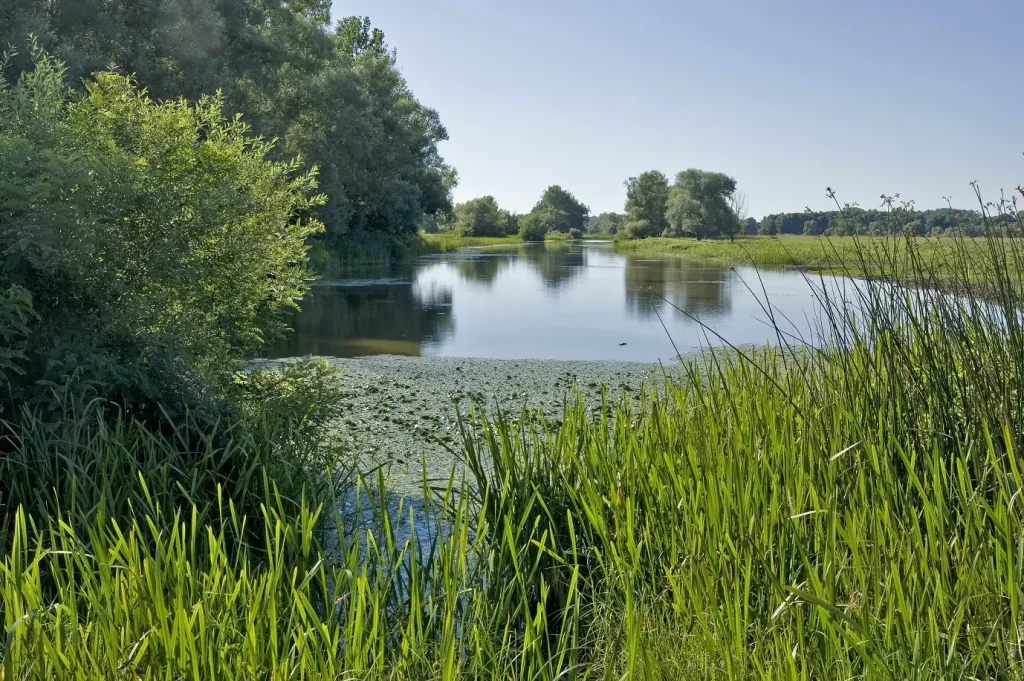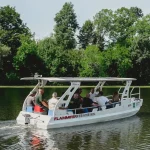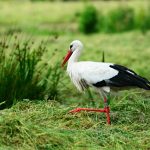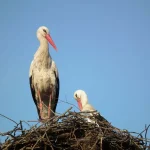September 24, 2020 – Who says the biggest and most interesting parts of Croatia are on the coast? Under the slogan “Discover the undiscovered” (“Otkrij neotkriveno”), Lonjsko Polje Nature Park attracts tourists to the Central part of Croatia with plenty of natural beauty and rich cultural heritage. Only about 70 kilometers away from Zagreb, Lonjsko Polje is a perfect getaway place to experience this autumn.
This nature park is one of the biggest and best-preserved natural floodplains in Europe and is worth visiting while traveling through Croatia. It’s the second biggest nature park in Croatia, so try not to avoid it on your way back home from the coast.
Thanks to the outflow of the Sava River and its tributaries into Lonjsko, Poganovo, and Mokro Fields (polja), every year, this nature park is a unique treasury of biological diversity, not only in Croatia but on the entire Old Continent.
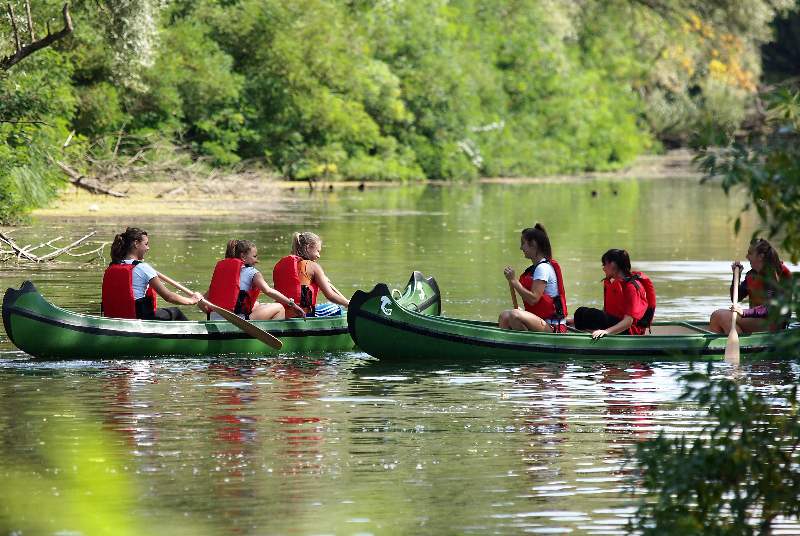
Canoeing at the Lonjsko Polje Nature Park / Lonjsko Polje Nature Park
Even though it spreads along the Sava River, its name comes from the nearby Lonja River that is also responsible for the flooding of the Lonjsko Polje area.
Discovering Lonjsko Polje from the viewpoints or the river, sailing straight to the beautiful nature, you’ll get a glimpse of Posavina wildlife away from the city crowds.
How to get there?
Lonjsko Polje Nature Park is geographically located in the plain of the middle course of the Sava River, about 75 km southeast of Zagreb, and extends from the central Croatian town of Sisak to the small town of Novska.
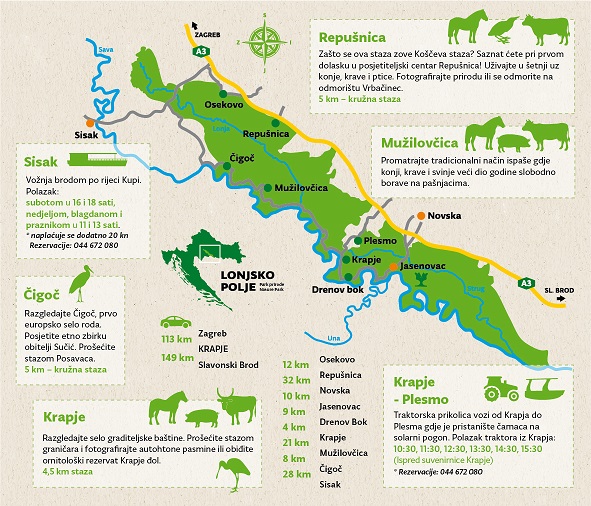
The tourist map of the Lonjsko Polje Nature Park / Lonjsko Polje Nature Park
There are 14 rural settlements in the nature park area, and the entrances are located in the villages of Repušnica, Čigoč, and Krapje.
To increase the attractiveness of the Park, a Visitor Center named Crna roda (black stork) in Osekovo will soon be opened.
While driving through the A3 motorway from Zagreb, you will probably notice traffic signs showing exits to Lonjsko Polje. You can easily get to Lonjsko Polje by exiting at Popovača and driving to the Repušnica village where you’ll find a reception center.
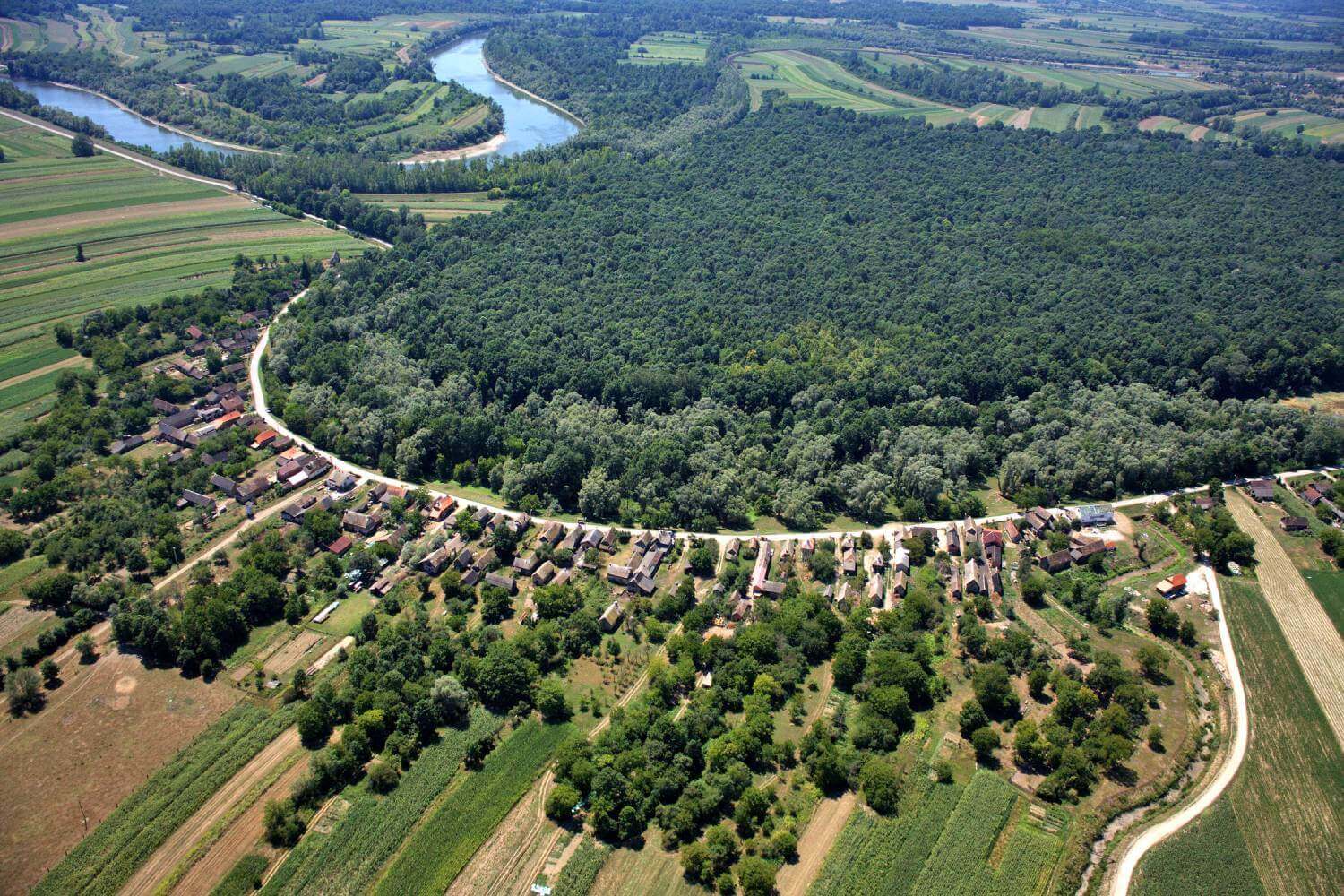
Čigoč village from above / Boris Krstinić
By exiting the motorway at Popovača, you can also get to the Čigoč village, the first European village of storks, and enter the nature park.
The other way is to exit at Lipovljani or Novska and drive to the village of Krapje where the Visitor Center is located. This way is also good if you’re coming from the direction of Slavonski Brod.
What to see and do?
On Saturdays, Sundays, and holidays, Lonjsko Polje offers weekend programs that combine education and recreation by visiting all three villages (Repušnica, Čigoč, and Krapje) and enjoying all the attractions that each of them offers.
Krapje village
Krapje has the title of a village of architectural heritage. With a tour of Krapje, you can walk along the footpath, hear the stories about the traditional architecture, and visit the rich ornithological reserve Krapje đol.
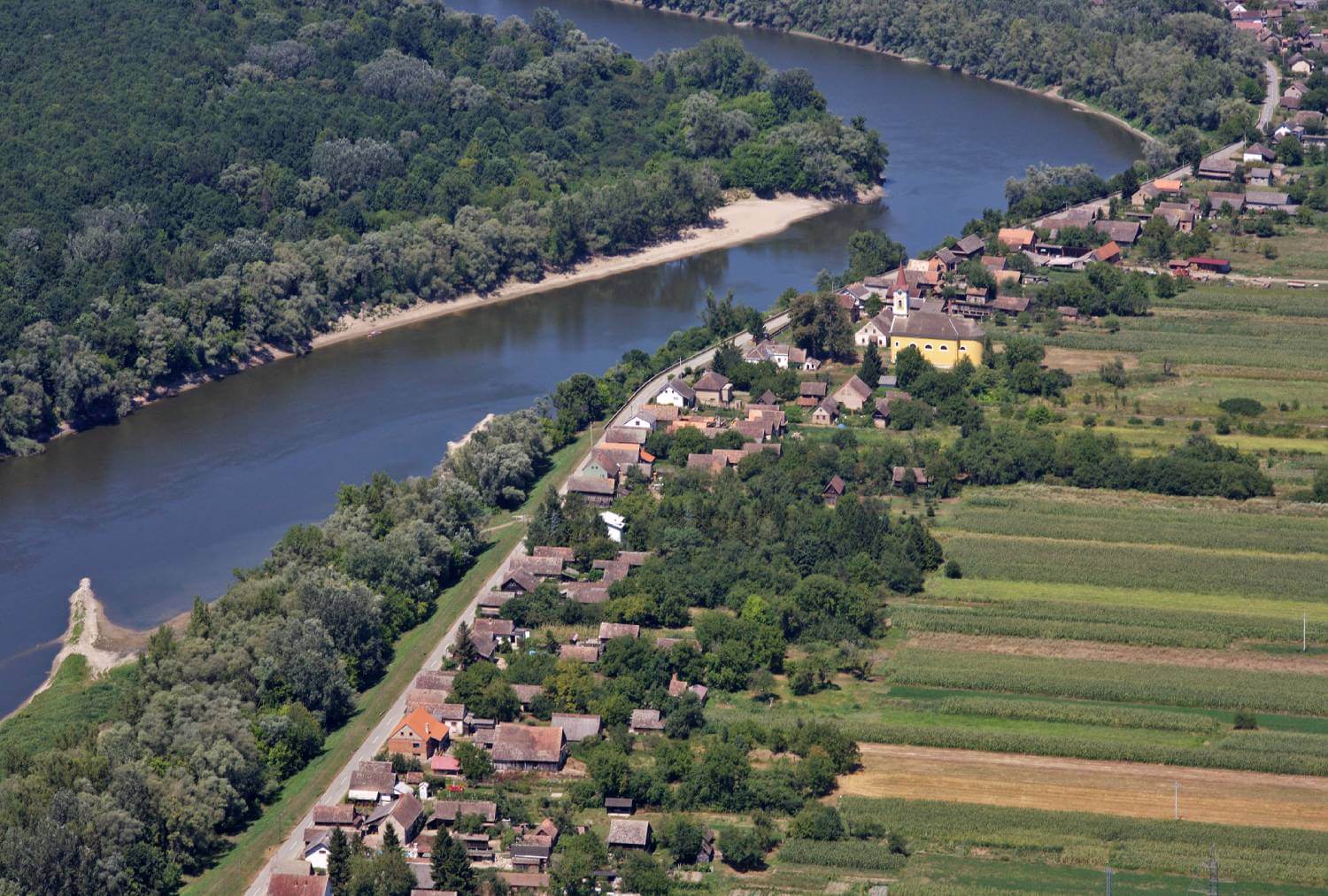
Krapje village from above / Boris Krstinić
Namely, Lonjsko Polje is a habitat for more than two-thirds of the total bird population in Croatia, so it’s a perfect place for birdwatching.
Later you can embark on an oldtimer tractor ride with a trailer, from Krapje Visitor Center to the village of Plesmo, where you can experience the latest attraction of Lonjsko Polje – sailing on solar-powered boats.
Solar-powered boat ride at Plesmo
Two solar-powered boats have recently started sailing on the small Strug River from the dock in the village of Plesmo. These are almost silent vessels that allow you to discover the beauty of the self-contained tributary of the Sava River.
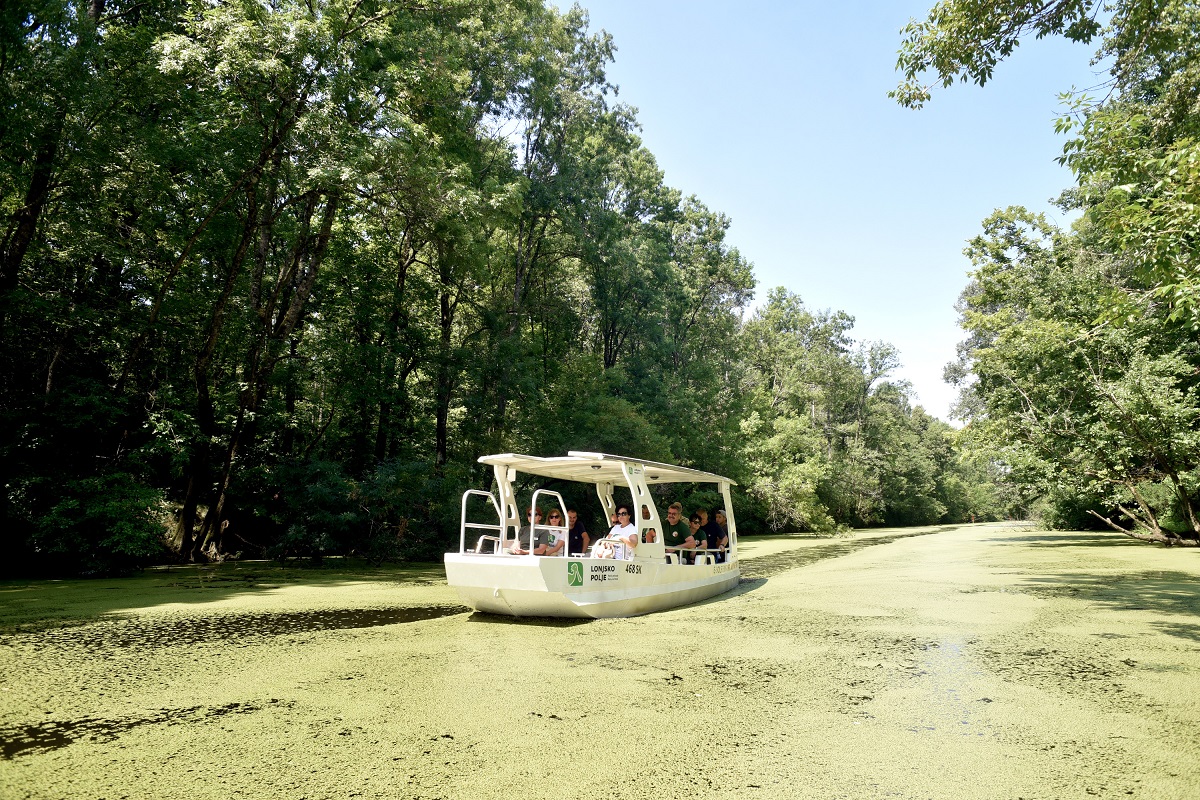
Solar-powered tourist boat / Željko Gašparović
The boat ride gives you a discreet view of nature as it has been developing in and around the river for thousands of years – without human influence or in minimal contact with it.
For example, during the ride, you can see beaver habitats, as well as the cattle grazing, along with the birds for which Lonjsko Polje is well-known among ornithologists around the world.
The boats, but also the canoes, can be used on weekends and holidays with prior reservation by phone, and during the week by appointment, as well as bikes.
The oldtimer tractor to the dock in Plesmo runs every hour from 10.30 am to 3.30 pm. Due to the limited space and large interest, it is recommended to schedule your tractor and solar boat rides.
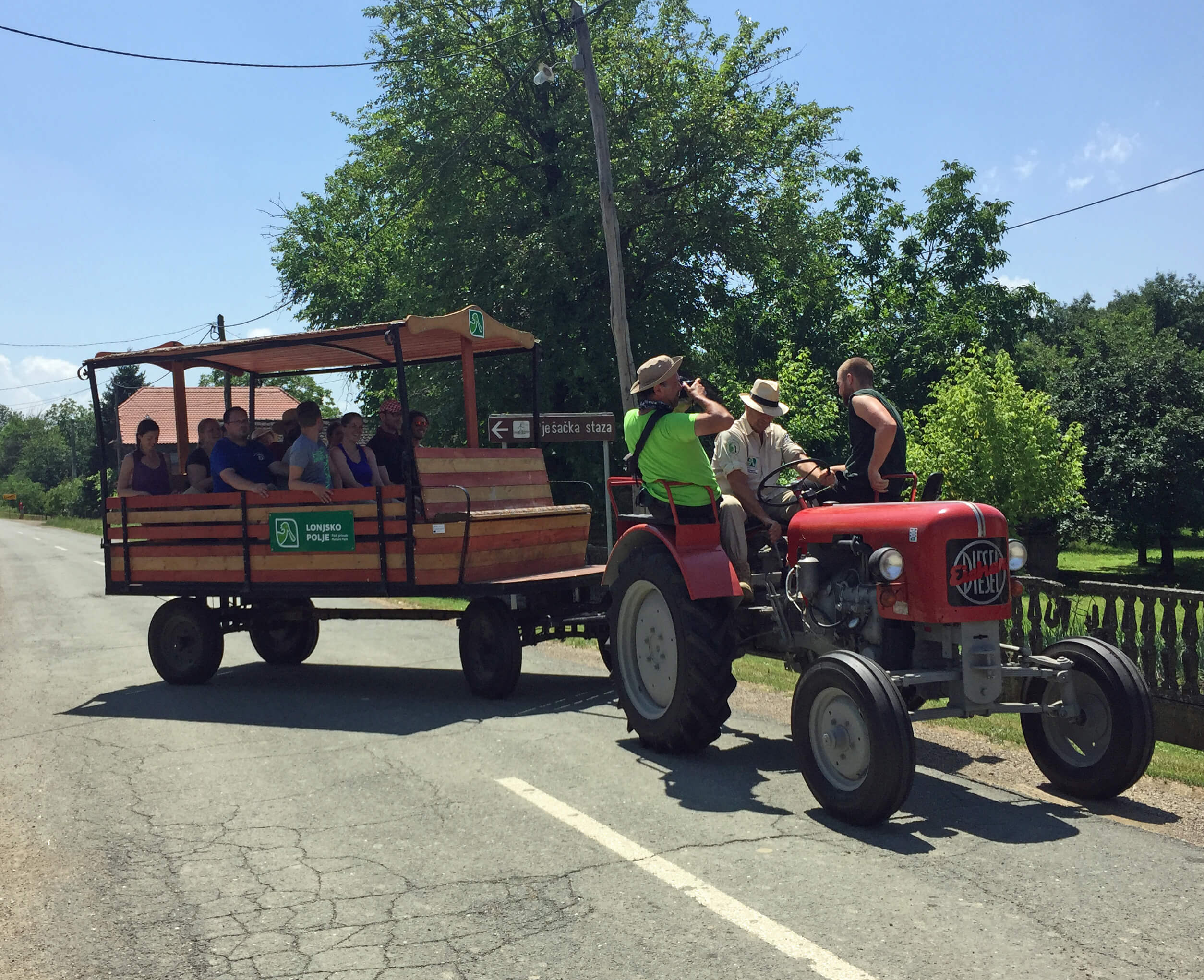
The oldtimer tractor with a trailer / Lonjsko Polje Nature Park
Near Plesmo and Krapje, there is also an eco-ethno village of Strug where you can try some traditional Posavina meals and even stay for the night.
Stork village Čigoč
Čigoč village is known for its famous and strictly protected migratory bird – the white stork. On Sundays at 1 pm, you can hear a story about the white stork at the Visitor Center Čigoč.
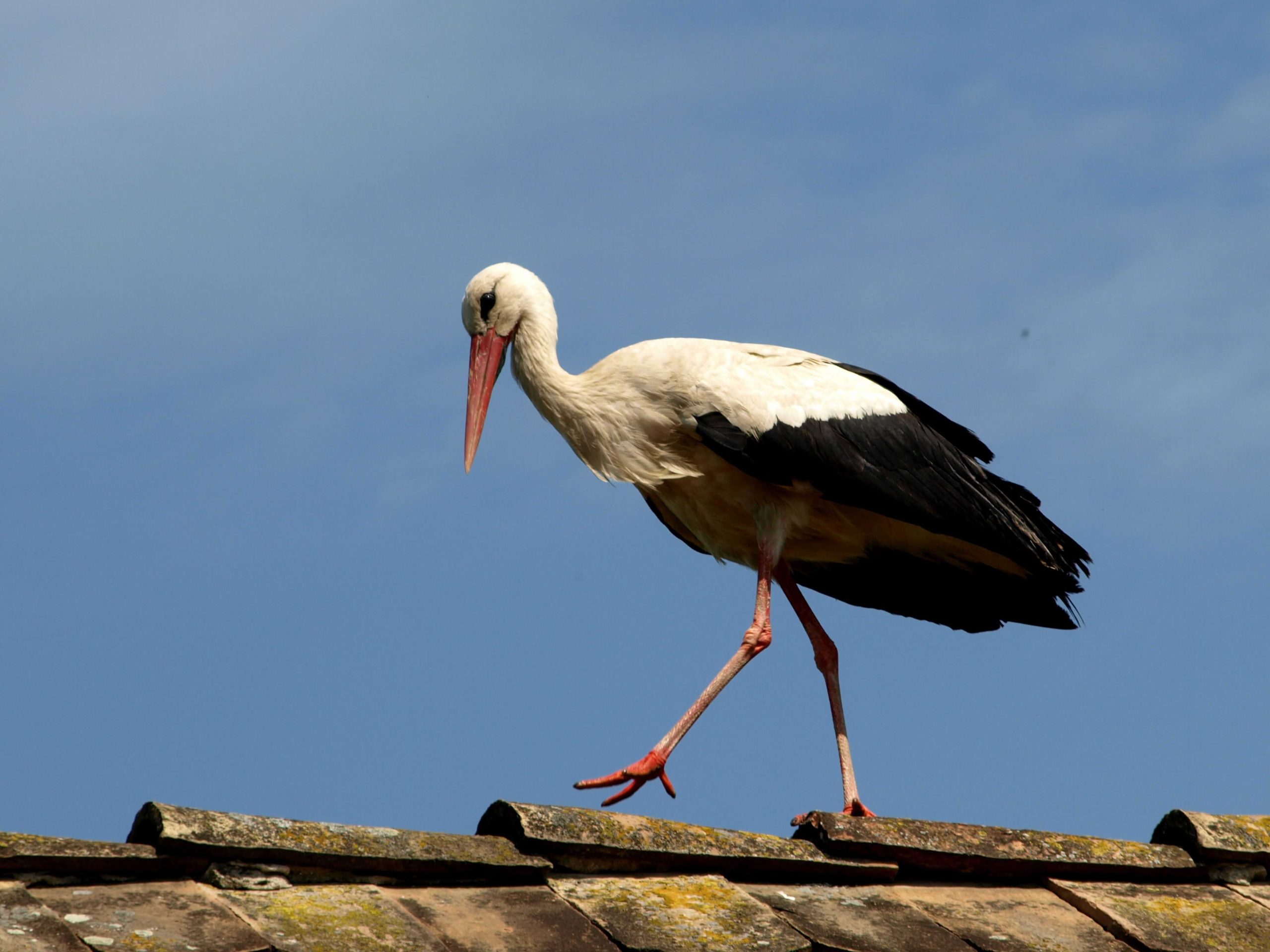
White stork / Romulić and Stojčić
Together with a village tour, where you can see wooden Posavina houses and recognizable stork nests, you can tour the ethnic collection by the family Sučić, and observe the traditional way of grazing cattle in the nearby village Mužilovčica.
It is also possible to enjoy a walk with horses, cows, and birds along the Koščeva staza walking trail that passes through Repušnica.
Traditional wooden Posavina house in Čigoč / Romulić and Stojčić
More boat rides in the Park
In addition to innovative solar-powered vessels, the Vodomar vessel – a ferryboat, a 15-meter-long raft – is still in operation for sailing on the Sava River. Its dock is in the village of Drenov Bok, and during the ride, you can see the attractive river landscape with natural riverside where willows and poplars grow, and sandbanks are spread.
In the past, the traditional river-powered raft was used to transfer people and vehicles across the river. Today there are two of those rafts in operation – in the villages of Kratečko and Lukavec Posavski, and they are intended for tourist sightseeing.
This is also an unforgettable experience provided by Lonjsko Polje.
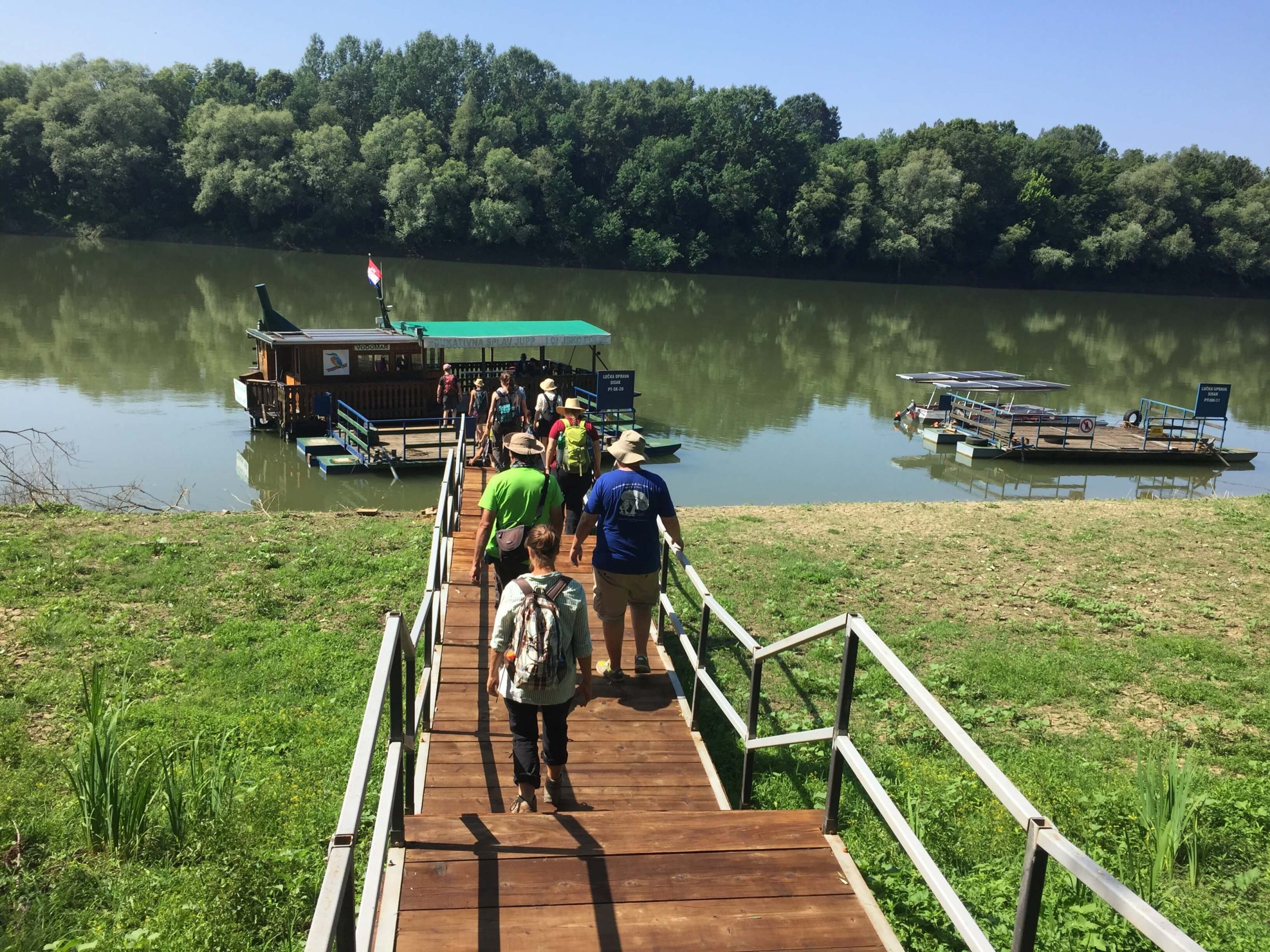
The Vodomar vessel at the dock in Drenov Bok / Lonjsko Polje Nature Park
The tourist boat Katarina 1 is intended for popular cruise excursions, and its dock is in the municipality of Jasenovac, at the foot of the railway bridge.
During the ride on the Sava River, you can reach the confluence of the River Una to the Sava, and favorable hydrological conditions enable sailing on the Una River. This ride provides a unique experience of the Posavina landscape and the passage under the road and railway bridges.
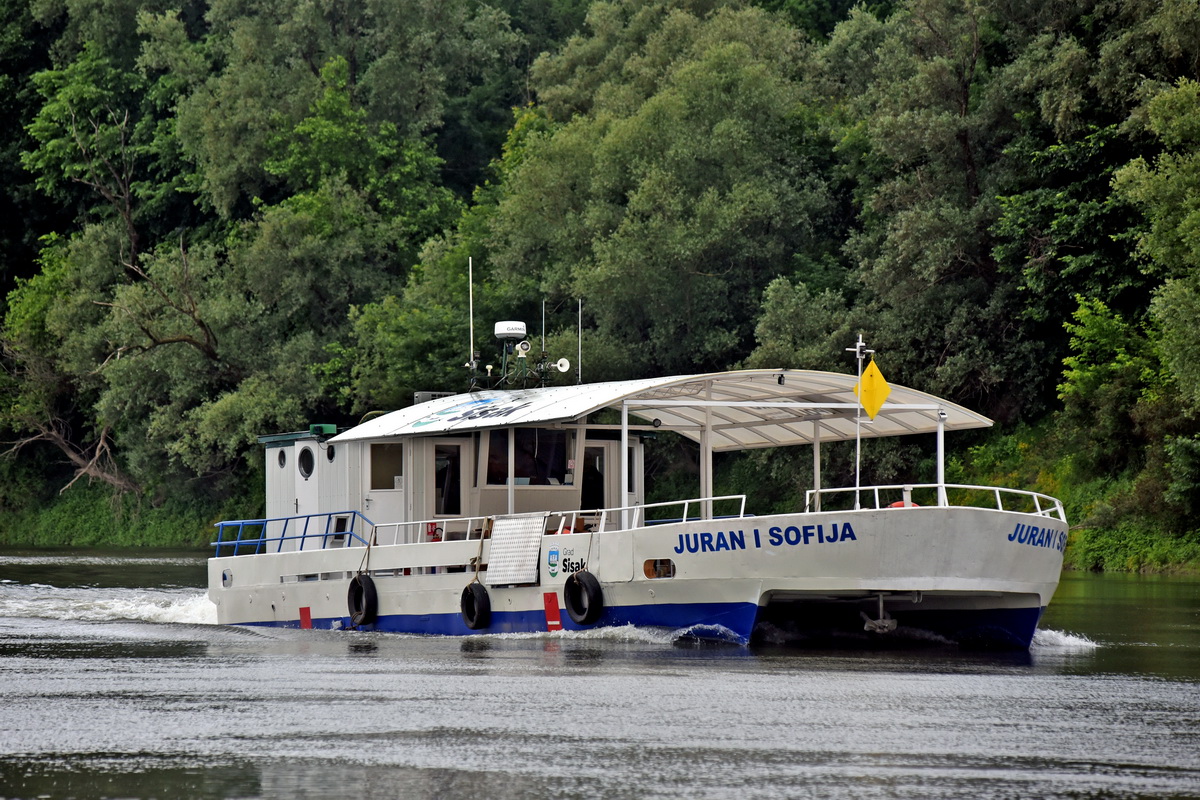
The tourist boat Juran and Sofija / Željko Gašparović
One of the novelties this year in the Lonjsko Polje Nature Park is also the old reconstructed boat Juran and Sofija. It started to sail again on the River Kupa in Sisak. On this boat, you can get to know the historic center of Sisak and the Sisak part of Posavina.
Walking and cycling trails in the Park
Walking trails that lead through the Park provide a view of wild and indigenous species of domestic animals. They are Posavina horses (posavski konj), Turopolje pigs (turopoljska svinja), and Slavonian-Srijem Podolian cattle (slavonsko-srijemsko podolsko govedo).
Slavonian-Srijem Podolian cattle (slavonsko-srijemsko podolsko govedo) / Boris Krstinić
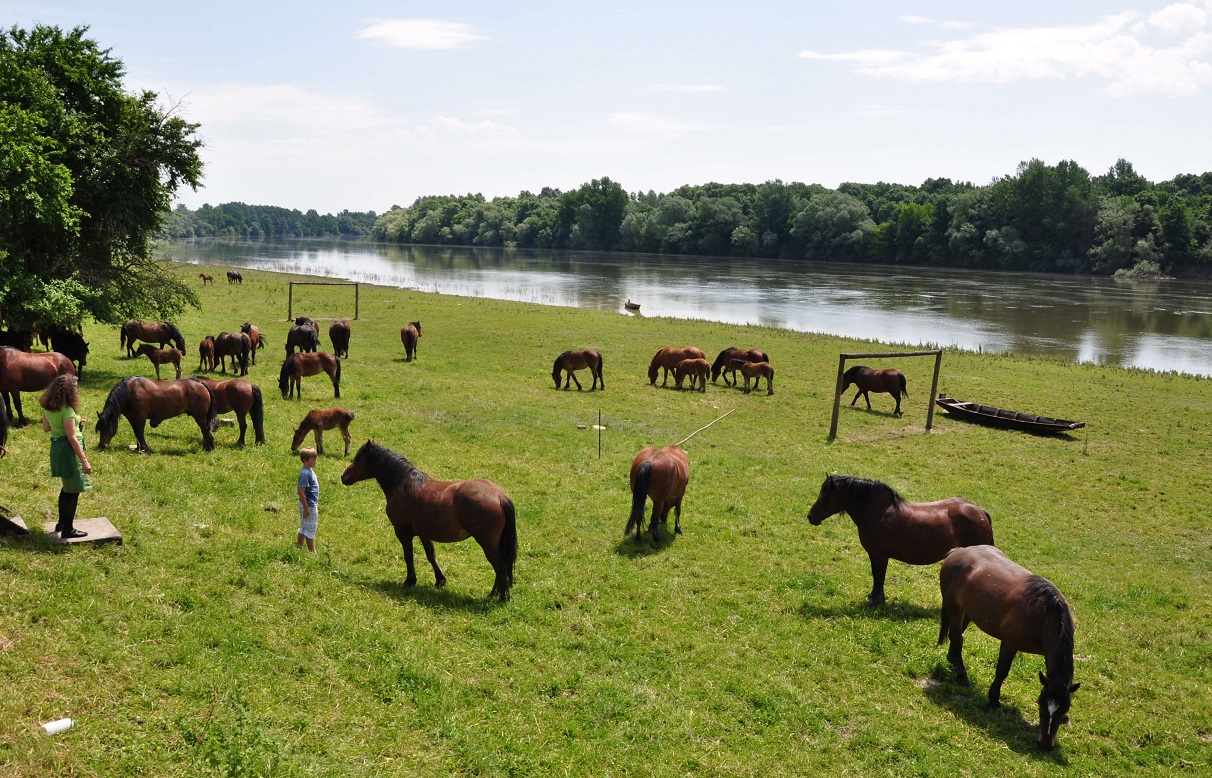
Posavina horses (posavski konj) in the field / Lonjsko Polje Nature Park
Of the many interesting walking trails along which you can observe cattle, the Staza graničara (“Border guards Trail”), which starts from the Visitor Center Krapje, stands out in the park. A walk along this trail also brings a breath of the past because the Military Frontier (Vojna krajina) – the border between the Austro-Hungarian and Ottoman empires – once stretched here, after which the trail got its name.
Today, two replicas of wooden historical watchtowers (čardaci) are symbolically built next to it.
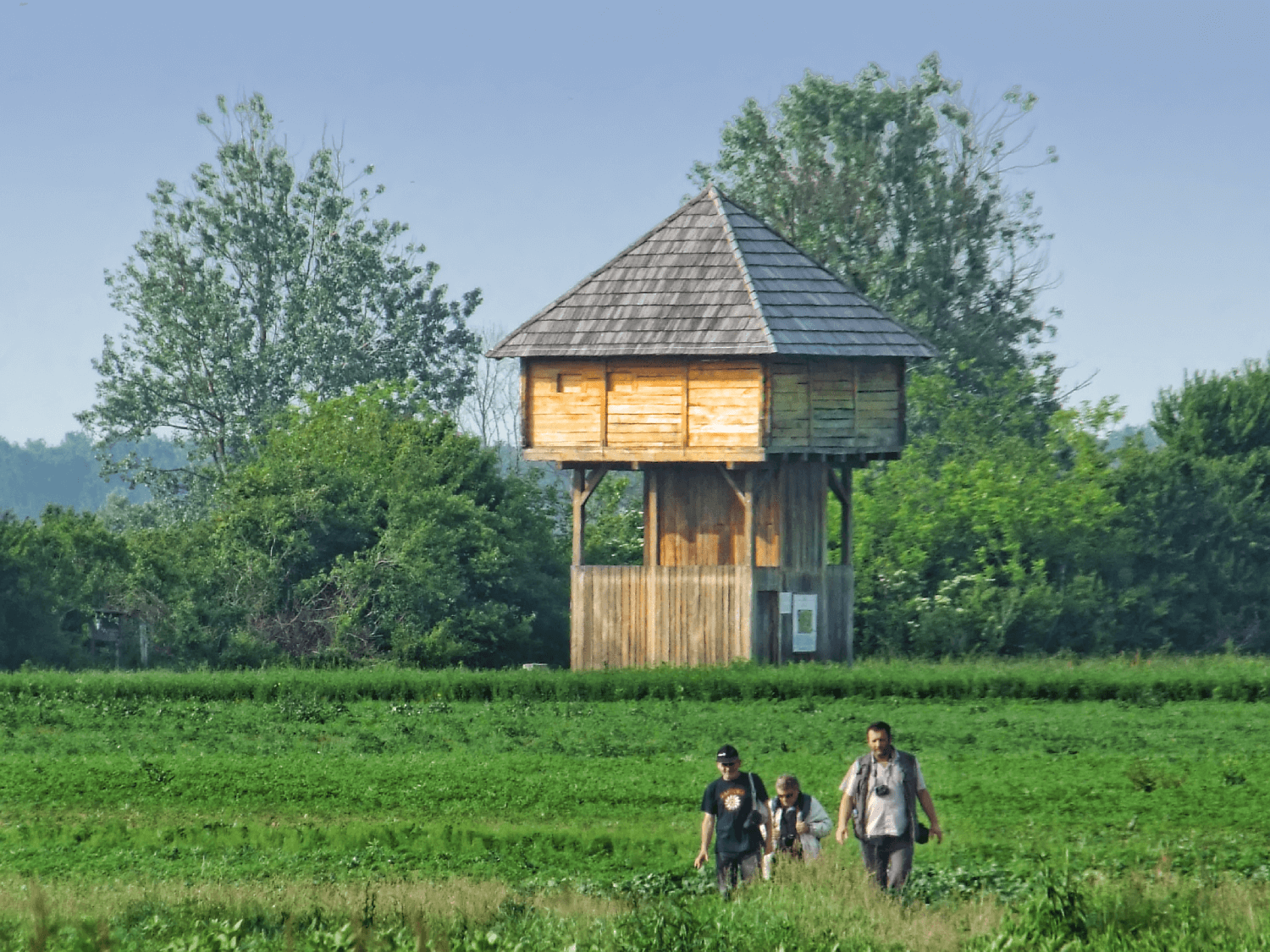
Wooden historical watchtower (čardak) / Lonjsko Polje Nature Park
Other interesting walking trails include Staza Posavca, Tenina staza, and Koščeva staza.
Cycling trails of the Lonjsko Polje Nature Park are perfect if you love easy and pleasant rides because there are almost no height differences. The sparse traffic on the rural roads that the routes pass through makes them extremely safe to drive.
Also, some rural households that are engaged in tourism here offer cyclists refreshment and enjoyment of the original Posavina gastronomy, and cyclists are even allowed to rest in “bike and bed” accommodation.
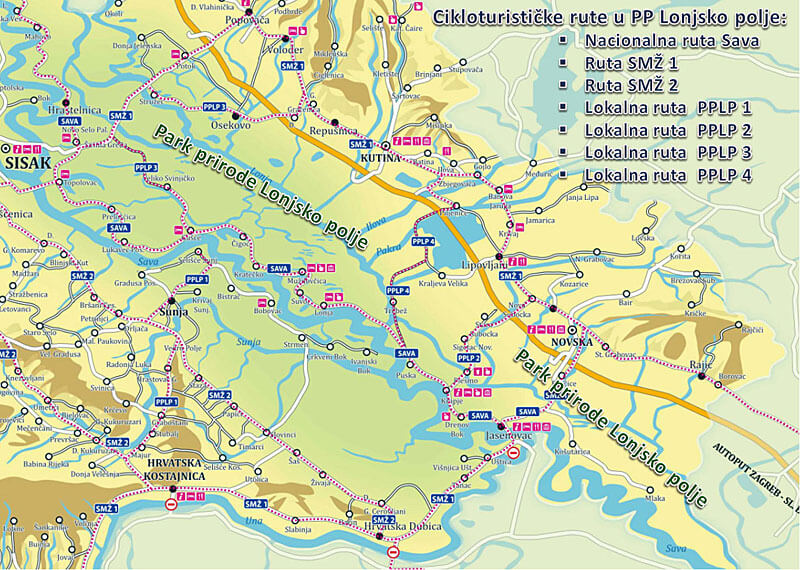
Bike routes at the Lonjsko Polje Nature Park / Lonjsko Polje Nature Park
Tourism and environment
All the beauties and attractions of the Lonjsko Polje Nature Park are also available on weekdays, but with prior notice. Also, the prices of all attractions are listed on their official website.
Although the Lonjsko Polje Nature Park offers a multitude of tourist facilities to visitors, their primary activity is still the preservation of biological and landscape diversity that the Park abounds in.
It is also important for them to ensure the survival of the local population in the rural area of the Park.
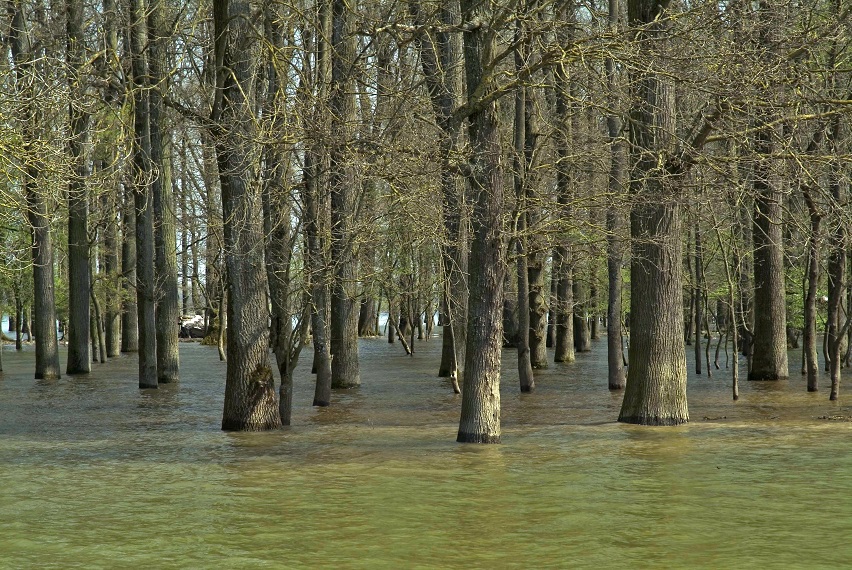
Flooded forest / Lonjsko Polje Nature Park
Lonjsko Polje Nature Park respects the prescribed epidemiological measures, which means the protection of employees and visitors of the Park.
Since Lonjsko Polje is the second-largest nature park in Croatia, boasting an area of more than 50,000 hectares, it is easily possible to stick to the recommended distance between people.
https://www.youtube.com/watch?v=v=uiJOl5FCeSw
For the latest travel info, bookmark our main travel info article, which is updated daily.
Read the Croatian Travel Update in your language – now available in 24 languages
Join the Total Croatia Travel INFO Viber community.

